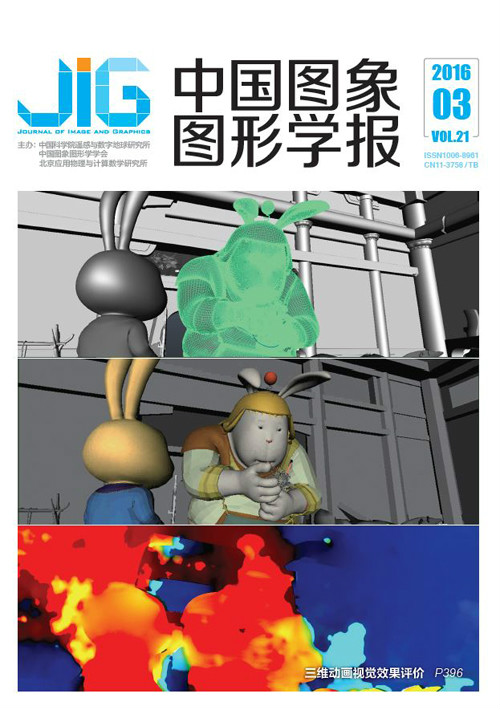
判别特征回归的鲁棒目标跟踪
摘 要
目的 近年来,目标跟踪领域取得了很大进步,但是由于尺度变化,运动,形状畸变或者遮挡等造成的外观变化,仍然是目标跟踪中的一大挑战,因而有效的图像表达方法是提高目标跟踪鲁棒性的一个关键因素。方法 从中层视觉角度出发,首先对训练图像进行超像素分割,将得到特征向量集以及对应的置信值作为输入值,通过特征回归的方法建立目标跟踪中的判别外观模型,将跟踪图像的特征向量输入该模型,得到候选区域的置信值,从而高效地分离前景和背景,确定目标区域。结果 在公开数据集上进行跟踪实验。本文算法能较好地处理目标尺度变化、姿态变化、光照变化、形状畸变、遮挡等外观变化;和主流跟踪算法进行对比,本文算法在跟踪误差方面表现出色,在carScale、subway、tiger1视频中能取得最好结果,平均误差为12像素,3像素和21像素;和同类型的方法相比,本文算法在算法效率上表现出色,所有视频的跟踪效率均高于同类型算法,在carScale视频中的效率,是同类算法效率的32倍。结论 实验结果表明,本文目标跟踪算法具有高效性和鲁棒性,适用于目标发生外观变化时的目标跟踪问题。目前跟踪中只用了单一特征,未来考虑融合多特征来提升算法鲁棒性和准确度。
关键词
Discriminative feature regression for robust visual tracking
Gao Yaqi, Liu Risheng, Fan Xin, Li Haojie(Department of Software, Dalian University of Technology, Dalian 116621, China) Abstract
Objective Visual object tracking has advanced significantly in recent years. However, variations in appearance because of changes in scale, motion, shape deformation, or occlusion continue to pose challenges to object tracking. Therefore,an efficient appearance representation method plays a key role in improving the robustness of object tracking. Method In this paper, a tracking method from the perspective of midlevel is proposed. First,superpixel segmentation is performedon training frames, in which the feature set and corresponding confidence values are taken as inputs and the discriminative appearance model is constructed via feature regression. When the tracking frame comes, the feature set is inputted into the model and the confidence of candidate regions is obtained, thereby separating the target from the background. Result The algorithm is evaluated using public data sets. Experimental results demonstrate that our algorithm can handle appearance changes, such as variations in scale, position, illumination, shape distortion, and occlusion. Compared with state-of-the-art methods, our algorithm performs well in center error and obtains the best result in carScale,subway, and tiger1 sequences, with average center location errors of 12, 3 and 21 pixels, respectively. Comparedwith the same type of method, our algorithm is more efficient in all sequences and in 32 times of other method in carScale sequence. Conclusion Experimental results demonstrate the effectiveness and robustness of our tracking method under appearance changes. Only one kind of feature is applied in the proposed algorithm; thus, better features can be incorporated to further improve the tracking results.
Keywords
|



 中国图象图形学报 │ 京ICP备05080539号-4 │ 本系统由
中国图象图形学报 │ 京ICP备05080539号-4 │ 本系统由